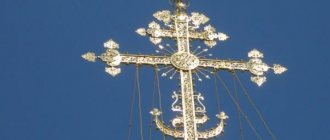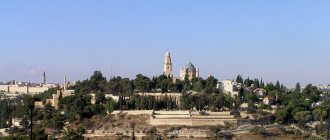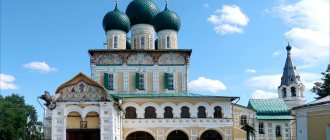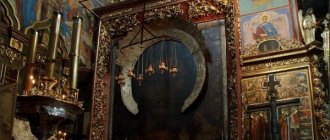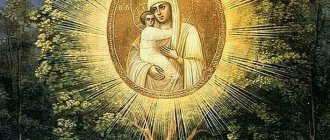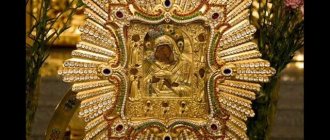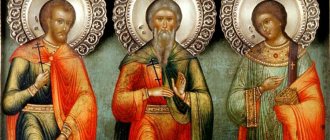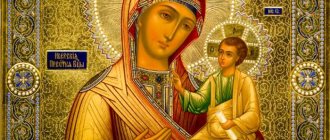If you look closely at Orthodox crosses, you will notice that at their base there is a crescent, which is not there by chance. The crescent on the cross or tsata is a symbol of Jesus Christ as King and also High Priest, but few people know about this. This symbol should remind parishioners of churches that their King and Lord is Jesus Christ, it is in search of him that everyone comes to church, which means it is worth throwing away extraneous thoughts and devoting time to the Lord. It is the crescent that symbolizes the Kingdom, as well as the high priesthood, which is why it is on Orthodox crosses.
History of appearance
In the Orthodox religion, the crescent on the cross is usually called tsata. Tsatsa decorated crosses on churches at the beginning of the second millennium. They can be seen on one of the oldest churches that have survived to this day - the Church of the Intercession on the Nerl (1165).
Since ancient times, this Byzantine symbol denoted royal power. Therefore, the crescent was placed on the image of the Kyiv prince Yaroslav in the “Royal Chronicler” back in the 16th century. And only after the conquest of Constantinople by Turkish troops, this symbol was “pumped” into Islam. You can also see the crescent moon on icons of saints. For example, on the vestments of Nicholas the Wonderworker, as well as the Savior Jesus Christ Himself and His Mother, the Most Holy Theotokos and the Ever-Virgin Mary.
Today, historians do not undertake to assert the exact time of the appearance of tsata, but it is known for certain that such a symbol was present in Christianity even before the baptism of Rus' by Prince Vladimir.
Crescent or boat: versions of the origin of the sign
There are several versions of what exactly the crescent moon on the Orthodox cross symbolizes. Among them we highlight the following:
- This sign is not a crescent at all. There is another ancient symbol that is visually similar to it. The cross as a symbol of Christianity was not immediately approved. Constantine the Great established Christianity as the main religion of Byzantium, and this required a new recognizable symbol. And for the first three centuries, the graves of Christians were decorated with other signs - a fish (in Greek “ichthys” - the monogram “Jesus Christ the Son of God the Savior”), an olive branch or an anchor.
- The anchor also has a special meaning in the Christian religion. This sign means hope and inviolability of faith.
- Also, the Bethlehem manger resembles a crescent moon. It was in them that Christ was found as a child. The cross rests on the birth of Christ and grows from his cradle.
- The Eucharistic cup, which contains the Body of Christ, may be implied by this sign.
- This is also a symbol of the ship led by Christ the Savior. The cross in this sense is a sail. The Church under this sail is sailing towards salvation in the Kingdom of God.
All these versions are true to some extent. Each generation has put its own meaning into this sign, which is so important for Christian believers.
Meaning and symbols
Today you can find many interpretations of this symbolism. It is quite clear that in any religion everything is symbolic. Therefore, a crescent moon can represent not only a celestial body, but also completely different things. Moreover, if it were really a crescent, then its location would be completely different, and not upside down, as we are used to seeing.
Here is a list of the main interpretations that are accepted by the Orthodox Church.
- Anchor. The Apostle Paul, in one of his letters to the ancient people, tells that the Cross on which Jesus Christ was crucified signifies an anchor that all believers should take hold of, as hope, so as not to drown in the godless world of passions. Therefore, the image of the usual eight-pointed cross with a crescent at the base is more reminiscent of a ship’s anchor. Moreover, the ends of the month are shaped like an arrow. It is no coincidence that it is located on the domes, so that everyone can see from afar that only here is a refuge for the salvation of human souls.
- Power. Here it is necessary to return again to Byzantium and remember that the crescent signifies belonging to the royal family and is a symbol of a person invested with royal power. The head of the Church in Orthodoxy is Jesus Christ. He is the head, the Lord, the King. Therefore, not only Temples are crowned with tsats, but they can also be seen on icons of the Savior.
- Font. The most important event in the life of an Orthodox Christian is his Baptism. Through baptism, a person is aligned with God, gets rid of original sin and can inherit the Kingdom of God. Therefore, the font in which this most important Sacrament takes place is symbolically depicted on temple domes.
- Nursery. Some religious scholars claim that the unfinished oval at the base is nothing more than the manger in which the Infant God rested. That he came to earth to save people, not as a Strict Judge and Punisher, but as a Meek Teacher and Savior, to save perishing humanity from the slavery of sin and the Devil.
- Bowl. Every Sunday in all Orthodox churches the Sacrament of the Eucharist (Thanksgiving) or, as it is most often called, Communion is celebrated, when believers with love and reverence partake of the Body and Blood of Their Savior, offering him songs of thanks and praise. So it is quite likely that the crescent also means the Cup from which the clergy give the Holy Gifts to the believers.
- Sail. The Church is often called the ship that leads all believers to salvation. Therefore, a cross with a crescent means a kind of sail that helps to “sail” in the right direction.
Despite the interpretations, it must be remembered that this symbol was approved by Constantine the Great as confirmation that Orthodoxy had become the main state faith.
Vadim DERUZHINSKY
“Analytical newspaper “Secret Research”, No. 12, 2009
The domes of Russian churches are decorated with a cross with a crescent - or, more precisely, a cross with a crescent at the base. What is the origin of this tradition?
CONNECTION WITH PAGANITY
The Orthodox priests themselves do not know the origins of the cross with a crescent and try to explain it purely speculatively (for example, that the sickle is “the cradle on which the human soul will fly to the Other World”). The only more or less serious study of the topic can be found only in the book by B.A. Uspensky “The Cross and the Circle: From the History of Christian Symbolism” (M., 2006, pp. 225-258). The author writes:
“The symbolism of the cross naturally fits into Christian ideas - it corresponds to the very function of the Christian temple and, obviously, does not need explanation. But what does the crescent mean? Why is this combination itself so stable? This question also worried Maxim the Greek, who dedicated a special discussion to it, “The Legend that under the cross on the church there is like a young month surrounded.” And finally, another question arises: is this composition a purely Russian phenomenon?
It is usually believed that crosses of this kind appear after the liberation from Tatar-Mongol rule to commemorate the victory of Orthodoxy over Islam. This opinion does not stand up to criticism. Undoubtedly, the phenomenon that interests us arose in the pre-Mongol period. This is eloquently evidenced, in particular, by the cross with a crescent on the dome of the Vladimir Demetrius Cathedral (1194-1197); this cross retains its original shape. One could refer in this regard to other ancient temples, but we cannot always be sure that the crosses on them retain their ancient shape.
This kind of cross is found in ancient times when depicting churches on miniatures and icon stamps. So, for example, we find it in the miniatures of the so-called Missal of Anthony the Roman from the beginning of the 14th century, the Fedorov Gospel of 1321-1327, the Simonov Psalter of the second quarter of the 14th century, the chronicle of George Amartol from the middle of the 14th century, the Sylvester collection of the 14th century, the Book of Hours 1423 of the Kirillo-Belozersky Monastery, Psalms of 1424 of the Kirillo-Belozersky Monastery, collection before 1426 of the Kirillo-Belozersky Monastery, Ladder of the late 15th century; on the stamps of the Kyiv icon of St. Nicholas of Zaraisk from the beginning of the 14th century. (Tretyakov Gallery), Novgorod icon of St. Nicholas with a life from the Church of Boris and Gleb of the 14th-15th centuries. (Novgorod Museum-Reserve) and on the icon of St. Nicholas of Mozhaisky from the Trinity-Sergius Monastery of the early 15th century. (Tretyakov Gallery). In some cases, under the cross we find not a crescent-shaped crescent, but an omega- or fleur-de-lis shape. This combination can be interpreted as prosperous or as an anchor cross (a combination of a cross and an anchor).
...The cross with a crescent can also be found on stone carved crosses - the Peryn cross of the 14th century, the cross of the Church of the Nativity of the Virgin Mary on Molotkov of the 14th century. and others; The bronze cross of the 12th-13th centuries is close in shape to the Peryn cross. from Vasiliev. We also see this image on graffiti and on official seals. Let us also note a similar configuration on the staff of the Apostle Peter, the image of which is presented at Great Zion in the 12th century. from the Novgorod St. Sophia Cathedral, as well as on the staff of John the Baptist on the miniature of the Simonov Psalter of the 14th century.”
It should be added that in ancient times (before the 14th century) such crosses were also common in Lithuania (now Belarus).
B.A. Uspensky writes: “So, it is certainly unlawful to explain the image that interests us (if we keep in mind its origin) as a symbol of the triumph of Christianity over Islam. Equally illegitimate, apparently, is the attempt to see here a symbolic image of the triumph of Christianity over paganism - so, in particular, some researchers see here the image of a serpent, symbolizing paganism, trampled under the cross.
But how to interpret this composition? The cross has for us primarily Christian associations; Meanwhile, the crescent obviously represents the moon, i.e., it is a symbol of undoubtedly pagan origin... How, then, can we explain this combination of Christian and pagan symbolism? Does it talk about dual faith, that is, about the functional unification of Christian and pagan principles? But why then is this combination legalized in temple decor? Why is it so common?
It should be borne in mind that the cross with a crescent is one of the oldest forms of the cross on Russian churches. Another common form of the Russian domed cross is the so-called eight-pointed cross, i.e. a cross that is as close as possible to the image of the Crucifixion (with an upper crossbar symbolically representing a table with an inscription above the head of Christ, and an oblique lower crossbar indicating the foot). Both forms are canonical in nature, but the domed cross with a crescent is the older form, and the eight-pointed cross is a relatively newer form.
The shape of the domed cross was the subject of a special resolution of the Stoglavy Cathedral in 1551... It was determined that crosses would henceforth be erected according to the model of the cross on the Moscow Assumption Cathedral. This cross, which is similar in shape to the “exaltation” cross used during the service at Matins of the Exaltation, is eight-pointed... As we see, the eight-pointed cross on the dome of the Assumption Church in the Moscow Kremlin, placed directly in front of the Stoglav Cathedral (in 1550), represented a new a phenomenon for that time; At the same time, it was noted that previously crosses were placed “according to the ancient law” - it is quite likely that crosses with a crescent could have been meant...
Having decided to henceforth erect eight-pointed crosses on churches, the Stoglavy Council did not make a decision on replacing the old crosses erected “according to the ancient law”; There is no doubt, in any case, that crosses with a crescent continued to exist after the cathedral, that is, both types of domed cross that interest us - eight-pointed and with a crescent - coexisted with each other.”
Next B.A. Uspensky gives his explanation of this ancient symbol. In pre-Christian (pagan) times, the cross was an image of the Sun, so the Moon was often drawn along with the cross. In Christianity, the cross came to mean Jesus, and the crescent moon - the Virgin Mary. “An illustration of this last image can be at least the Vilna icon of the Ostrobramskaya Mother of God, where the image of the Mother of God is combined with a crescent (under the icon there is a large metal crescent on which the Mother of God seems to be standing) and she is surrounded by 12 stars.”
However, this symbol is associated not only with pagan ideas, but also with Islam:
“The combination of a cross and a crescent finds its closest correspondence in the combination of a star and a crescent, widespread in the East: this latter combination, which was once the state emblem of Sasanian Iran, then became a symbol of Islam.
In all likelihood, in the East, along with the combination of a star and a crescent, at one time there was also a combination of a cross and a crescent, and its disappearance is explained by the fact that the cross became associated with Christianity; similarly, in the West, the star and crescent combination has become associated with Islam. The following episode is indicative in this regard. During the Crimean War (1853-1856) in the Turkish army there was a Cossack detachment (Old Believers - Nekrasov Cossacks), which successfully fought with Russian troops. Sultan Abdul-Mecid presented the Cossacks with a banner depicting a cross and a crescent - as a symbol uniting Muslims and Orthodox Christians. As we see, in combination with the crescent, the cross and the star can be naturally identified.”
It seems to me that B.A. Uspensky came close to the solution - but stopped, not wanting to explore the connection of this symbol no longer with paganism, but with Islam.
CONNECTION WITH ISLAM
The Moscow historian Alexei Bychkov turned out to be much more decisive in the search for truth, who in his new book “The Battle of the Ice and other “myths” of Russian history” (M., AST, 2008) writes:
“Since 602, the faithful and the Orthodox prayed in the same churches, on the domes of which an eight-pointed star in a crescent shone. Then the Orthodox left only the crescent, and the Orthodox, having slightly distorted the star, turning it into a cross with rays, left this cross with a crescent. Such a cross can still be seen on Russian churches.”
Here is the ANSWER TO THE RIDDLE.
Islam from 578 to 1180 was a Christian sect, for “Muslim is the Protestantism of the Eastern Church.” John of Damascus (685-755) served as first adviser at the court of the caliph. His father, Sergius-Mansur, was the state treasurer at the Umayyad court. Under the second caliph, Abu Jafar al-Mansur (754-775), Christian liturgical books were translated into Arabic, and Christianity was preached in churches in Arabic. Emperor Leo III the Isaurian (717-741), in a letter to Omar II, notes that Christians of his time already owned many lives of Muhammad, “written by Christian bishops during the lifetime of the Prophet himself.” The Byzantines translated the Koran into Greek and considered it an integral part of Orthodoxy.
Thus, at the baptism of Rus' by the Kyiv prince Vladimir, no division between Orthodoxy and Islam yet existed (as the storytellers lie about Vladimir’s “choice of faith”). Bychkov cites hundreds of facts convincingly proving that Prince Vladimir, at the baptism of Kyiv, introduced precisely the “Muslim form of Orthodoxy,” and not the Greek one.
The split between Orthodoxy and Islam occurred only in 1180 (when the church hierarchs of Constantinople proclaimed Anathema to Islam - due to ridiculous errors in the translation of the Koran and because of monstrous gossip about the customs of Muslims), and before that Islam was considered an Orthodox religion. For two centuries, Kievan Rus was considered a kind of Orthodox country, although its religion was Islam. Kyiv at that time traded and was friends only with Islamic countries, and the peoples of Kievan Rus themselves were Muslim - primarily the Pechenegs and Khazars. The people of Kiev themselves are originally an Iranian-speaking people, related to the Ossetians. Almost all Kyiv treasures of that time contain Arabic coins (European ones make up a tiny part), and most of the dishes have inscriptions in Arabic. All this eastern then “migrated” to Finnish Muscovy, which was captured and Slavicized by the Kyiv princes. Even in the 12th century, polygamy was common among Russian princes, wild for Europe at that time, but normal for the East. The split between Byzantium and Islam did not affect either Kievan Rus, or even more so the distant Finnish Muscovy.
Bychkov writes:
“But in 1180 this excommunication affected only Byzantium. Rus' remained orthodox for a long time, until in 1666 the “correction of the books” took place, when the old scriptures (actually, the texts of the Koran) were not confiscated, and the new Scripture (the Bible translated from Hebrew and Latin, and not from Greek, to besides) did not begin to impose itself by force. This does not mean at all that in addition to the Koran, the Russians did not have the Gospels. Were. For the Gospels are books considered divine by Muslims as well. But gradually the Koranic texts were destroyed, sometimes by force, sometimes by fire, sometimes by dilapidation. It was not easy to rewrite them.
...So gradually among the Old Believers the Koran, which was incomprehensible in its language, fell out of use and the Gospel entered into use. But many Old Believers retained Muslim rituals. In the old days, before prayer, the Old Believers performed ablution, and if there was no water at hand, they performed ablution with earth or river sand. If an Orthodox Christian Nikonian, Catholic or Gregorian ate from their dishes, the dishes were thrown away, as they believed that the dishes had been spoiled by Christians. A total of 16 common customs are listed. I would add two more."
This religion of the Old Believers is the religion of Ivan the Terrible and other autocrats of Muscovy (by the way, Bychkov proves that Ivan Kalita is Ivan Caliph, an Islamic concept, and not a “wallet”, which is “far-fetched”). This religion is not Orthodoxy, but orthodoxy was the single faith of the entire Horde, therefore there was not a single religious war or even skirmish in the Golden Horde. And for the same reason, the satraps of Muscovy destroyed when attacking Novgorod, Pskov, Tver, Polotsk - first of all, all the clergy and all the churches: these lands had already adopted the Byzantine model of Orthodoxy - therefore they were considered “heretics” by the Old Believers of Muscovy-Horde.
Of course, formally, this orthodoxy of the “Old Believers” of Muscovy-Horde was also Orthodoxy. But the faith of Ethiopia is also considered Orthodox, where boys are circumcised, where Jesus is called Yeshua, the Virgin Mary - Miriam, where in every temple there is always the “ark of the tablets of Moses”, and they pray with two crossed fingers (straight index and bent middle), depicting a cross . As we see, Orthodoxy is very different...
Bychkov: “It is important to understand that Orthodoxy and Orthodoxy are in Rus' [that is, in Muscovy-Horde, and not in Rus'. — Approx. A.D.] until the 17th century. constituted a single cultural layer. Everyone was Orthodox before Nikon. And then the split began. The Greek Orthodox (Nikonians) separated, who for some unknown reason began to call themselves Greek Orthodox, since they could not unite with the Greek Church, although later they united with the Nestorians, excommunicated from the Church by the Greeks.”
Let me remind you that the Nestorians deified state power - the Horde kings and then the Moscow rulers liked this, this deification of power was used by tsarism until 1917, and then by communism until 1991, now in the Russian Federation the people deify power in exactly the same way at the suggestion of the church and following a thousand-year tradition.
Historian A. Kuzmin in the book “The Fall of Perun” writes: “Even in the 17th century, both among the Mordovians and in Southern Rus', Friday was celebrated... It is no coincidence that later Friday would become a market, trading day in many areas: on this day it was impossible work, but you could trade.”
Bychkov: “The Jews have a day off on Saturday. For Christians - on Sunday. And Friday is for Russians and Muslims. The conclusion is clear.
In addition, girls and women spent their lives in a terem [harem] on the women's side. The groom could not even see the bride before the wedding. These, of course, are not the customs of pagans, but Muslim customs. True, in the villages they did not wear a burqa, where a woman had to work from dawn to dusk, but in both the city and the village, a bare-haired woman who was not tied with a scarf up to her eyes was considered a harlot.”
Jacob Reitenfels reports about Muscovy:
“Although the women of the royal family enjoy the greatest advantages over the Moscow queens in the European part of the globe, nowhere are they surrounded by such honor and respect as among the Moskhs. [Moskhi is, of course, the ethnic name of the Moksha people, Moksha, the Finns of the Mordovian group, who are the indigenous population of the Moscow region and from whose self-name the hydronym Moscow comes: Moks (Moksha people) + Va (“water” in Mordovian). — Approx. A.D.] It is not allowed to speak about them in the slightest disrespectful way, and no one can boast that they have seen the queen anywhere with her face uncovered. When they drive through the city among the people in carriages or go out of town, they are so shrouded in veils that neither they can be seen, nor they themselves see anything... At home, the girls spend their entire lives secluded in the women's quarters in the company of noble maidens and women, and none of the men, except a very few servants, are allowed to see them or talk to them.”
This “terem” is the HAREM! Both in name and in essence.
Bychkov: “The publication “Tsarskoye Selo Museum with a Collection of Weapons” (St. Petersburg, 1860) reports that the museum has a saber with Christian symbols and the Arabic inscription “ALLAH KERIM.” The interweaving of Christian symbols and lines from the Koran is also characteristic of Russian helmets. It turns out that our ancestors believed (at least in the 13th-15th centuries) that the Koran and Christianity are inseparable.”
And further: “Michalon Litvin [1480-1510 – Note. A.D.] reports that Muscovites and Tatars do not drink wine, selling it to Christians. “They are convinced that in this way they are exterminating Christian blood, fulfilling the will of God.” The author of the book “Haft Iklim” (XVI century) is indignant, reporting about the Russians that those who adorned themselves with the clothes of Islam for some reason retained a passion for pork meat! Imagine what a nightmare - Russians eat pork!
Oh God! Well, that’s how we are, we pray to Allah and eat pork!
Let's look at the princely helmets. Cap of Jericho, or Shishak, Prince F.I. Mstislavsky have inscriptions in Arabic. ...Coins of the 14th-15th centuries up to Ivan the Terrible have either only Arabic inscriptions, or Arabic and Russian at the same time. You can see the 13th verse of the 61st sura [of the Koran] on the helmet of Grand Duke Alexander Nevsky. Many people think that some eastern masters, even before the prince acquired the helmet, painted these verses somewhere in Islam. Alas! The famous master who made this helmet is Mikita Davydov. On the helmet there is an Arabic inscription with a Christian cross! Islam and Christianity are still united.
...Some argue that it was supposedly because of fear of the Tatars that we wrote in Arabic. It’s interesting what kind of Tatars Vasily III [who freed Muscovy from paying tribute to the Horde by 1480 - A.D.] was very afraid of, that on his coin he stamped the inscription: “PRINCE GREAT VASILI (in Russian) LA ILLYAKHI LA ILLYAH MUHAMMADDUN RASUL LLAYAKHI (in - Arabic)? (“There is no Allah but Allah, and Muhammad is his messenger.”)
And who was Tsar Ivan afraid of? On his coin, the entire inscription is in Russian, and only the name of the king is in Arabic. On the coin with the name “IBAN” on the reverse side there is the inscription: “MOSKOV AKHCHASY BU DYR” (“Moskov is her coin”).
Herberstein met with Vasily III and in his book includes an image of the Tsar [Bychkov is mistaken here - Vasily III was a Grand Duke, not a Tsar; His son Ivan the Terrible proclaimed himself the first Tsar of Muscovy in 1547. — Approx. A.D.] - in a Persian robe and turban. Stepan Razin also wore a turban.
In order not to prolong the proceedings, let us consider just one more example. Afanasy Nikitin, “Walking across Three Seas.” Having finished the manuscript, Athanasius writes a prayer to the Lord, which in modern publications is presented as follows: “In the name of the Merciful Lord and Jesus the Spirit of God...” It is not clear why Athanasius calls Jesus the Spirit of God? But in the original it is written a little differently, it should be written like this: “BISMILLIA RAHMAN RAHIM. ALLAH AKBAR. ISA RUCH OALLO. ALLAH SALAM. ALLAH AKBAR. LA ILLAHY LA ILLAHU. ALLAH IS THE FIRST DIGER..."
This is not Orthodoxy - this is Islam. But... the formula LA ILLYAHI LA ILLYAHU does not have the ending MUHAMMADUN RASULLU LLYAHI.
Islam without the Prophet is Russian Orthodoxy.
We consider the Koran to be the holy book, we write and pray in Arabic, but we call ourselves Orthodox Christians! Moreover, they quarreled and parted ways with the Tatars only because of the missing ending of the formula, for the Russians recognized only the fact that ISA RUKH OALLO (Jesus the Spirit of Allah), and the Tatars added MAHOMET - ROSSOLLA (Muhammad - the Justice of Allah).
The Tatars accepted the Arabic formula “THERE IS NO ALLAH BUT ALLAH, AND MUHAMMAD IS HIS MESSENGER,” while the Russians considered it sufficient reason to consider themselves Christians, since they believe that “ISA is the SPIRIT OF ALLAH.”
End of quote.
ANCIENT SYMBOL
Thus, we see that the cross with a crescent is not so much a pagan symbol (although the symbolism of Christianity and Islam, of course, stems from paganism), but a symbol that most of all reflects the era when Orthodoxy and Islam were still a single religion.
This symbol of a “single religion” was characteristic of Byzantium until 1180 (the split with Islam), and existed somewhat longer (until the 14th century) in Ukraine, Lithuania-Belarus, Tver, Pskov and Novgorod - where over time they also adopted a purely Greek version of Orthodoxy. But only Muscovy, integrated into the Horde, stubbornly retained this symbol of “single religion,” since it actually had a common Orthodox religion with the Tatars until later times.
When today such a cross is placed on new temple buildings in Minsk, Kyiv or Moscow, it, of course, does not mean a return to the same faith with Islam as it was “before the schism of 1180,” but is only a sign of ANCIENT TRADITION.
With all the current disunity between the Christian world and the Muslim world, this symbol makes us remember that Muslims and Christians were once co-religionists. One can only regret that this unity of faith was lost...
I do not agree with the philistine position (which, alas, it seemed to me, is inevitably represented by Alexey Bychkov, who finds the Islamic essence of the Muscovite beliefs “shameful”): in fact, it should be remembered that Christianity is a branch from Judaism, and Islam is a branch from Christianity. These are three faiths of the same root, equally based on the Bible, and for this reason none of them can be “more true” than the others.
In this understanding, the cross with a crescent is the oldest symbol of our once common faith in the One God. A relic of our unity of religions.
False interpretations
Today there are still those who claim that the cross with a crescent symbolizes the victory of the Christian faith over Islam. But only illiterate people can reason this way, who do not know that such symbolism appeared long before the emergence of the Muslim religion.
Some associate it with paganism. The sun god was often depicted as a cross and symbolized light and day, and the crescent moon symbolized night and darkness. But such a statement is erroneous, since no drawings have been found anywhere that combine these two symbols. And the pagan cross has equal sides and thickenings, both at the base and at the ends.
Differences between crosses in the Orthodox faith
Fyodor the Studite argued that “a cross of any form is a true cross.” Therefore, for believers in Jesus Christ, regardless of religion, any cross is a sacred symbol. Among Catholics, you can most often see a four-pointed cross, and among Orthodox Christians, an eight-pointed one.
The above-mentioned tsata may be placed at the base of the Orthodox cross, but it is not an integral part of it. On the domes you can also see other images, such as stars, which symbolize the Star of Bethlehem and indicate the true path for every Orthodox Christian. A crown is also common. It indicates that the temple was built with money and by order of the ruling emperor, and also that the Head of the Church - Christ - is the One True King.
On some temples you can see a cross with beads. These beads represent the drops of Christ's blood that he shed for the salvation of mankind. People often call them “tears.” They also symbolize the repentant tears of believers. It is also customary to decorate crosses with grapevines, three-headed lilies (Holy Trinity), angels, doves, blossoming shoots (tree of life and symbol of paradise).
Moreover, the cross itself can be four-pointed, six-pointed or eight-pointed. All these are Christian canonical images.
Star and Crescent
These symbols were borrowed by Muslims from Ancient Byzantium, which they do not deny. These signs have an ancient history dating back thousands of years. According to some sources, these symbols were widely used in pagan cults that existed in different regions of Russia.
In early Islam, a variety of symbols were also used, later they were replaced by a single one. Today there are a large number of temples and shrines decorated with a star and crescent. In the minds of Muslims they are closely connected with Islam.
